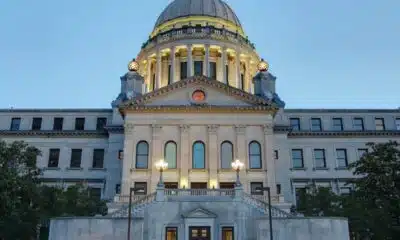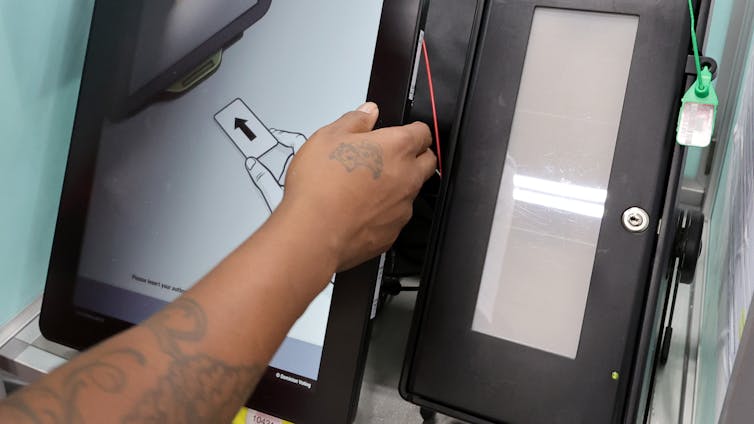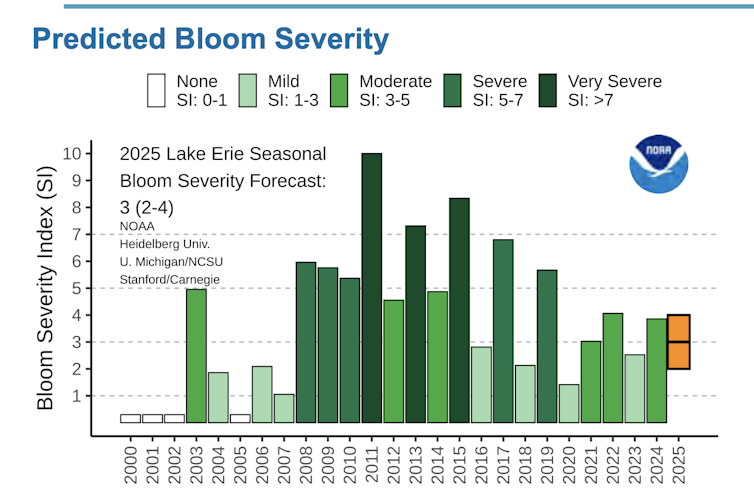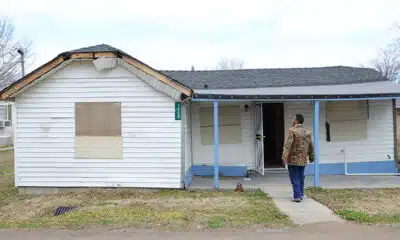
Patrick Gorski/NurPhoto via Getty Images
Mark Skidmore, Michigan State University; Camila Alvayay Torrejon, Universidad Católica del Norte, and Dusan Paredes Araya, Michigan State University
Few cities have experienced a sharper economic change of fortune than Detroit.
It was one of the fastest-growing cities in the nation between 1900 and 1950.
In the nearly 75 years since then, it has lost over 60% of its population, becoming the defining example of a postindustrial city in decline.
Chronic population loss creates a significant mismatch in the housing market. An ongoing reduction in the demand for housing leads to an oversupply of vacant properties. Vacant properties can quickly deteriorate due to neglect, arson, vandalism and crime.
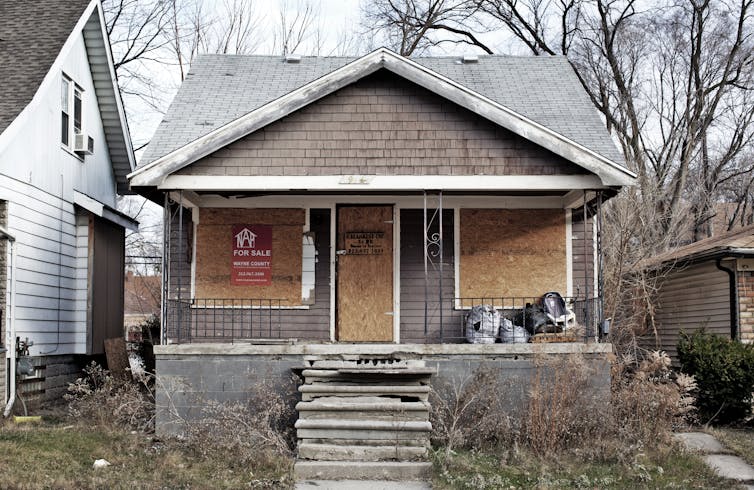
Charles Ommanney via Getty Images
Rehabilitating abandoned and neglected properties is often not possible. It can take just a few years for vacant homes to transition from being habitable to blighted. What should policymakers do with the growing unwanted inventory?
One option is to do nothing and wait for real estate developers to clean up the parcels and hopefully rebuild.
In the absence of private sector action, which often fails to take hold, city officials may implement policies to remove blighted properties and stabilize neighborhoods. That’s what Detroit has been doing since 1974. As a result, 17% of the city’s land area is now composed of vacant land where houses once stood.
As a group of economists who study municipal finance of cities experiencing population decline, we took a deep look at the success of razing blighted properties in Detroit.
Detroit removes thousands of blighted homes
Between 2014 and 2019, the city demolished 20,800 blighted properties through the Detroit Demolition Program. The heaviest concentration of demolitions occurred in the lowest-valued areas of the city such as the Brightmoor, Burbank and Midwest neighborhoods.
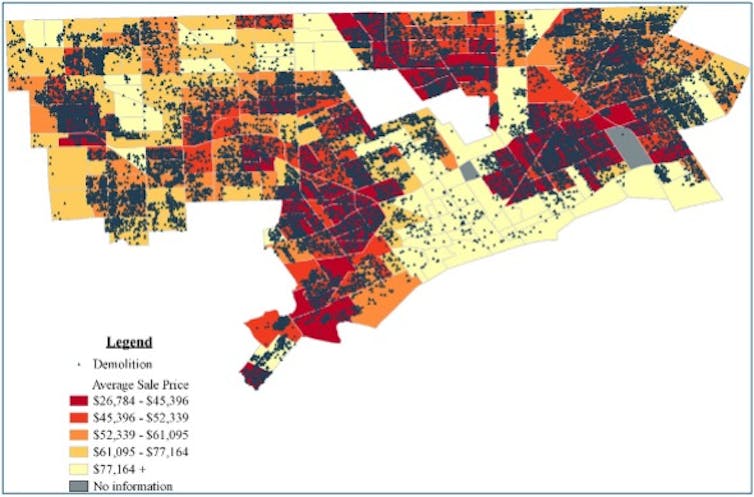
Alvayay Torrejón, Paredes, Skidmore (2023), CC BY-NC-ND
From 2014 to 2019, many of the demolitions were funded by the federal government’s Hardest Hit Fund. The goals of the fund are to help reduce homeowner foreclosures and stabilize neighborhoods. This fund spent US$52 million tearing down homes in Detroit.
As with any government intervention, it is critical to evaluate costs and benefits so leaders can be sure they are implementing the most effective revitalization strategy.
Costs and benefits of demolition
Research demonstrates that demolitions not only eliminate blight, they also stabilize neighborhood housing values, improve property tax compliance, reduce crime and eliminate toxic materials such as asbestos and lead paint.
From the perspective of city finances, the success of razing a property can be assessed in two ways.
First, does it increase the value of nearby properties? A study that two of us published in 2017 answered this question in the affirmative: Tearing down an abandoned building in Detroit does increase the value of nearby properties by a small amount: $162.
Second, how do changes in the value of those nearby properties affect Detroit’s property tax revenue? If property values increase, property taxes increase too, so it is possible to calculate how long it takes for the city to recoup its costs. On average, demolishing a blighted structure in Detroit costs $21,556.
In the case of Detroit during the period examined, our research shows the benefits of the program in terms of increased property values are limited and do not fully cover the demolition costs.
Even if you optimistically assume the benefits of demolition extend to properties as far as about 2½ blocks away, the increase in property tax revenue generated from the demolition is too small to cover demolition costs.
To understand why, imagine drawing a circle around the razed property with a radius of about 0.125 miles, which is how we defined 2½ city blocks, and then examining the change in property value and tax revenue of the properties within the circle. While removing a blighted property is a win in many other ways, it doesn’t have much effect on neighboring home values.
Our findings indicate that vacant lots also have a negative effect on the property values of surrounding homes. For example, for homes within 2½ city blocks, the net effect of a demolition without redevelopment is an increase in neighboring home prices of $162. In this case, it would take 50 years for money collected via property taxes to equal the costs of demolition. It’s hard to say what happens if the lot is redeveloped because so few are.
If you measure the effect using smaller rings around the razed property, full cost recovery times get even longer.
State and federal assistance
Yet over the long run, these demolitions are essential for maintaining quality of life and positioning the city for future redevelopment. Some would argue that it is the role of government to pay for programs like this in struggling cities. Under President George W. Bush, for example, the U.S. Department of Housing and Urban Development implemented the Neighborhood Stabilization Program, which included funds for the demolition of blighted structures.
The federal Hardest Hit Fund covered many of the demolitions in Detroit from 2014 to 2019. When that program ended, city voters showed their enthusiasm for removing blighted properties by approving Proposal N, a $250 million Detroit-funded plan to continue the demolition program.
However, additional property taxes to cover demolition costs may further put the city at competitive disadvantage in the region, nationally and globally. Detroit already has among the highest property taxes in the country.
Allowing the state to foot the bill would keep property taxes affordable, but support for such programs is mixed in the state Capitol in Lansing due to resource constraints and the fact that other Michigan cities such as Flint have also struggled with declines in population.
Lessons learned from Detroit’s razing
Detroit and other postindustrial American cities such as Cleveland, Ohio, and Gary, Indiana, have experienced population declines in recent decades, but these challenges are by no means exclusively a United States phenomenon.
Throughout history, cities such as Rome have experienced enormous drops in population. Paris lost population in medieval times. Some ancient cities such as Carthage and Petra have been fully abandoned.
In the coming years, Japan, Korea and a number of European countries are on track to experience significant population decline. Many resource-dependent cities in China have the same problem.
That means lessons learned from Detroit may be helpful to policymakers in other places. Many leaders in Detroit did not imagine that the population would decline over decades, and they didn’t plan for that happening.
Other cities have an opportunity to prepare. They can start by diversifying their economies and city revenue streams so that government has the funding to step in and ensure that quality of life is maintained as population shrinks.
Mark Skidmore, Professor of Government Finance and Policy, Michigan State University; Camila Alvayay Torrejon, Assistant professor of Economics, Universidad Católica del Norte, and Dusan Paredes Araya, Adjunct Professor of Economics, Michigan State University
This article is republished from The Conversation under a Creative Commons license. Read the original article.









